Star coloring pages offer a creative way to explore the wonders of the universe through art. From learning about Stars and constellations, to coloring various types of Stars, these coloring sheets allow you to embark on a celestial journey from the comfort of your own home. So grab your favorite coloring tools and get ready to add a vibrant touch to the cosmos with Star coloring sheets.
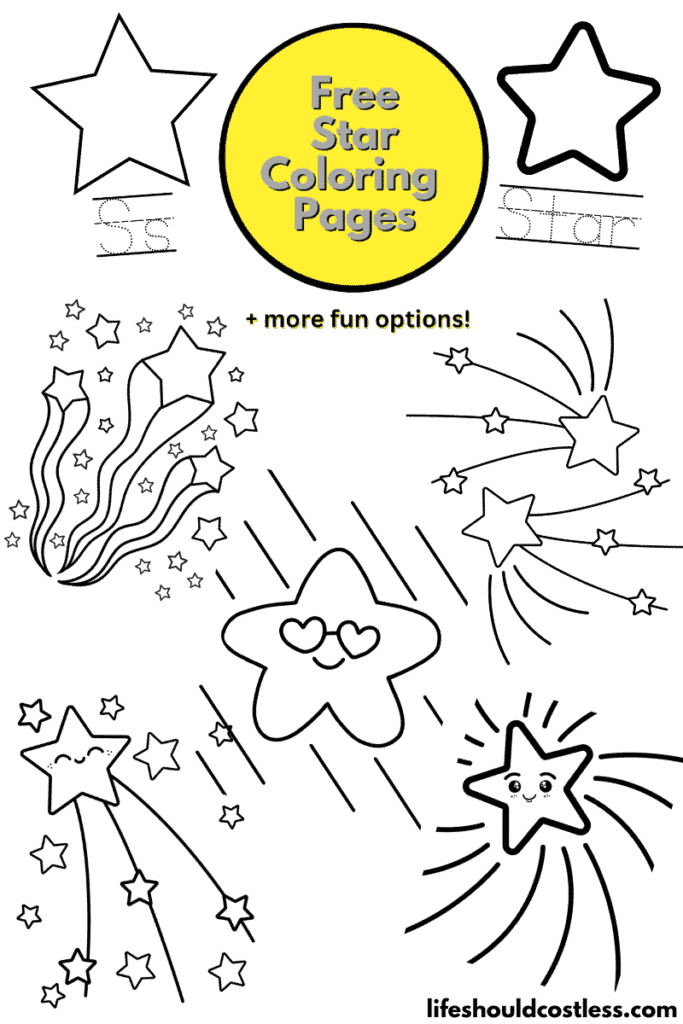
Just pick whichever design you like, save the downloadable free PDF template, print it out, and get coloring to your little hearts content.
Alternately you could even use them for that embroidery pattern or inspiration for fine line tattoos.
Star facts
If you’re new to my coloring pages, you should know that I like to give you the option of learning about the subject so that you can easily turn it into an educational lesson while you are at it…so here we go!
Here are some fun and interesting, simplified, facts about Stars and constellations (my reference source can be found here).
- Stars are massive, luminous balls of hot gas that emit light and heat through nuclear reactions occurring in their cores.
- The Sun is the closest Star to Earth and is classified as a yellow dwarf Star (check out my Sun coloring pages here).
- Stars vary in size, ranging from smaller than the Earth to supergiants hundreds of times larger than the Sun.
- The color of a Star can indicate its temperature, with blue Stars being the hottest and red Stars being the coolest.
- Stars are classified based on their luminosity, temperature, and spectral characteristics using the Hertzsprung-Russell diagram.
- The brightness of Stars is measured using the magnitude scale, with negative numbers representing the brightest Stars.
- Constellations are groups of Stars that form recognizable patterns in the night sky and have been used for navigation and storytelling throughout history.
- The 88 modern constellations were defined by the International Astronomical Union (IAU) to divide the entire celestial sphere.
- The North Star, also known as Polaris, is a prominent Star in the constellation Ursa Minor (the Little Bear) and has been used for navigation by sailors and travelers.
- Some constellations are named after mythological figures or animals, such as Orion, Ursa Major (the Great Bear), and Draco (the Dragon).
- Stars in constellations may appear close together from Earth, but they can actually be vast distances apart.
- Binary Stars are systems where two Stars orbit around a common center of mass, and they are quite common in the universe.
- Supernovae are explosive events that occur when massive Stars reach the end of their life cycles, resulting in a tremendous release of energy.
- Neutron Stars and black holes are remnants of massive Stars that have undergone gravitational collapse, resulting in incredibly dense and exotic objects.
- The study of Stars and their evolution is known as stellar astronomy, which helps us understand the life cycles of Stars and the formation of galaxies.
Remember, this list is just a snapshot of the fascinating information available about Stars. Feel free to explore further to uncover even more captivating facts about Stars and constellations!
Here are some other reputable resources to learn more about Stars while coloring:
- https://www.nationalgeographic.com/science/article/stars
- https://science.nasa.gov/astrophysics/focus-areas/how-do-stars-form-and-evolve
- https://hubblesite.org/science/stars-and-nebulas
- To see all of my free printables, go here.
- To see an Alphabetized Index of all my coloring pages, go here.
- To see all of my nature and weather coloring pages, go here.
Coloring tips
When it comes to coloring pages of stars, here are some tips and tricks to make your artwork truly shine:
- Color Selection: Experiment with a variety of colors to bring vibrancy to your star color sheet. Consider using shades of blue, purple, and yellow to create a celestial atmosphere. You can also try blending different colors together for a gradient effect.
- Shading and Highlights: Add depth and dimension to your stars by incorporating shading and highlights. Use lighter shades to create highlights on the edges of the stars, and darker shades to add shadows or depth. This technique can make your stars appear more three-dimensional.
- Glitter and Metallic Pens: To add a touch of sparkle to your stars, consider using glitter pens or metallic markers. These can simulate the twinkle and shine of real stars and make your artwork visually appealing.
- Background Effects: Experiment with different background effects to enhance your star coloring experience. You can create a nebula-like effect by lightly blending different colors together. Additionally, you can use a white gel pen to add small dots or lines to represent distant stars or create a starry sky effect.
- Experiment with Texture: To make your stars visually interesting, try adding texture to them. You can achieve this by using various coloring techniques, such as stippling (creating small dots), cross-hatching (creating intersecting lines), or even using a sponge or tissue to dab on colors and create a textured effect.
- Glow Effect: To make your stars appear luminous, consider adding a glow effect. You can achieve this by coloring a soft halo around the stars using a lighter shade of the star’s color. This technique can give the impression of light radiating from the stars.
- Experiment with Materials: Don’t limit yourself to just colored pencils. Explore different coloring materials like markers, pastels, or watercolors to create unique and captivating stars printable.
- Reference Images: Look for reference images of stars or night skies to inspire your coloring. Observing real-life examples can help you understand different star patterns, color combinations, and shading techniques.
Remember, coloring is a personal and creative activity, so feel free to experiment, have fun, and let your imagination guide you as you bring your star coloring page to life!
Options For Printing:
Letter S is for Star writing practice worksheets
*My letter S is for Star coloring sheet printables are specifically designed to be used in a classroom setting, they are the only printable options on this page that do not need written permission to use in a public setting.
Please send the link to this post along if anyone asks you where you got them. Thank you!
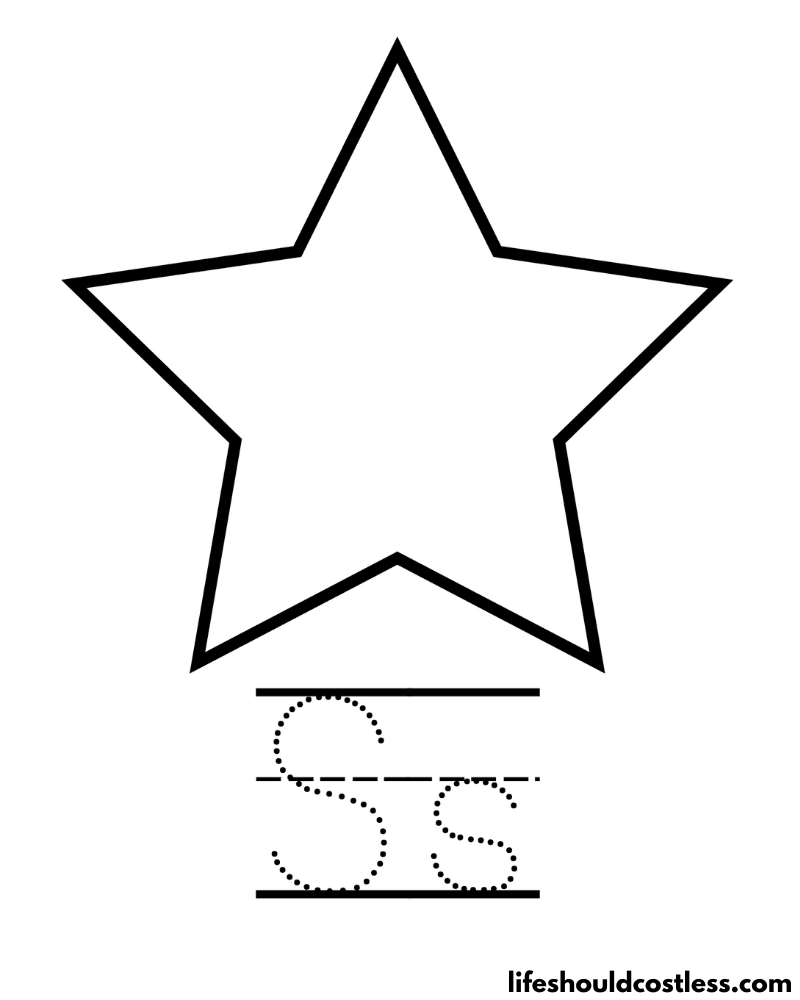
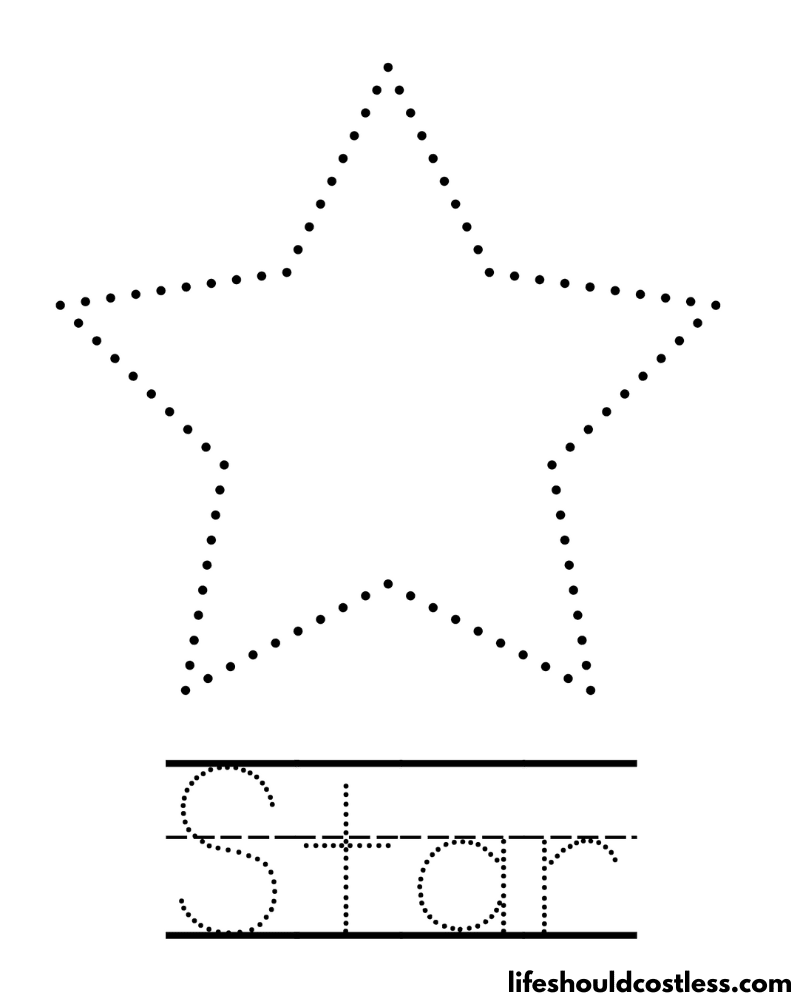
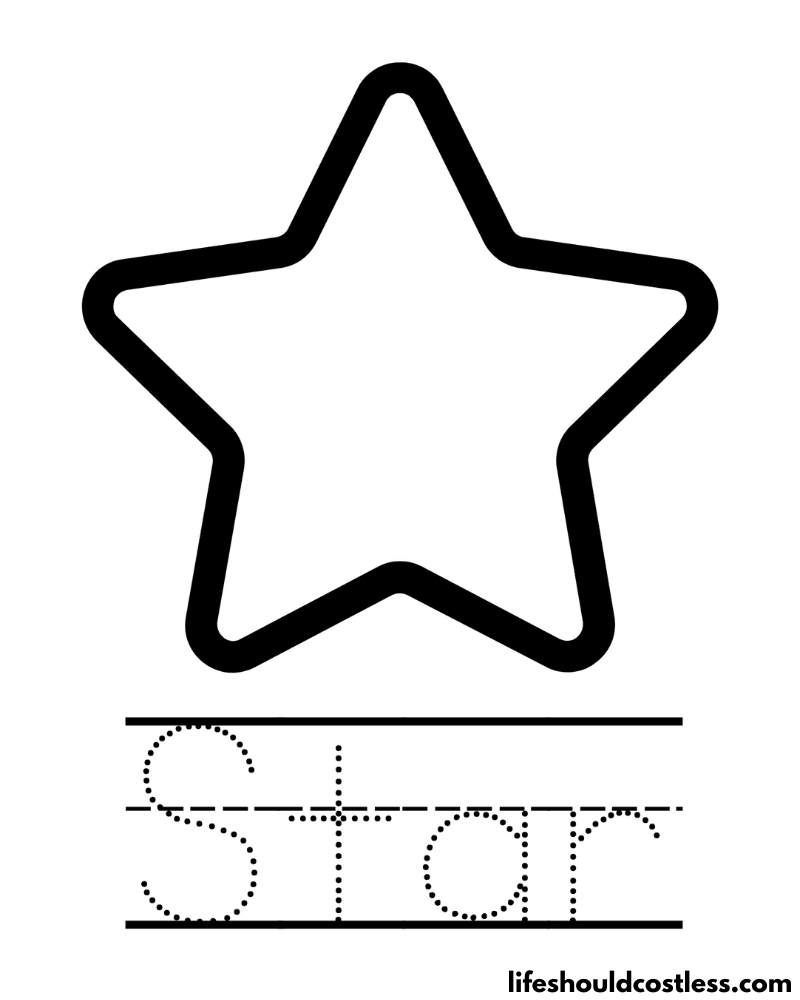
Kawaii Stars
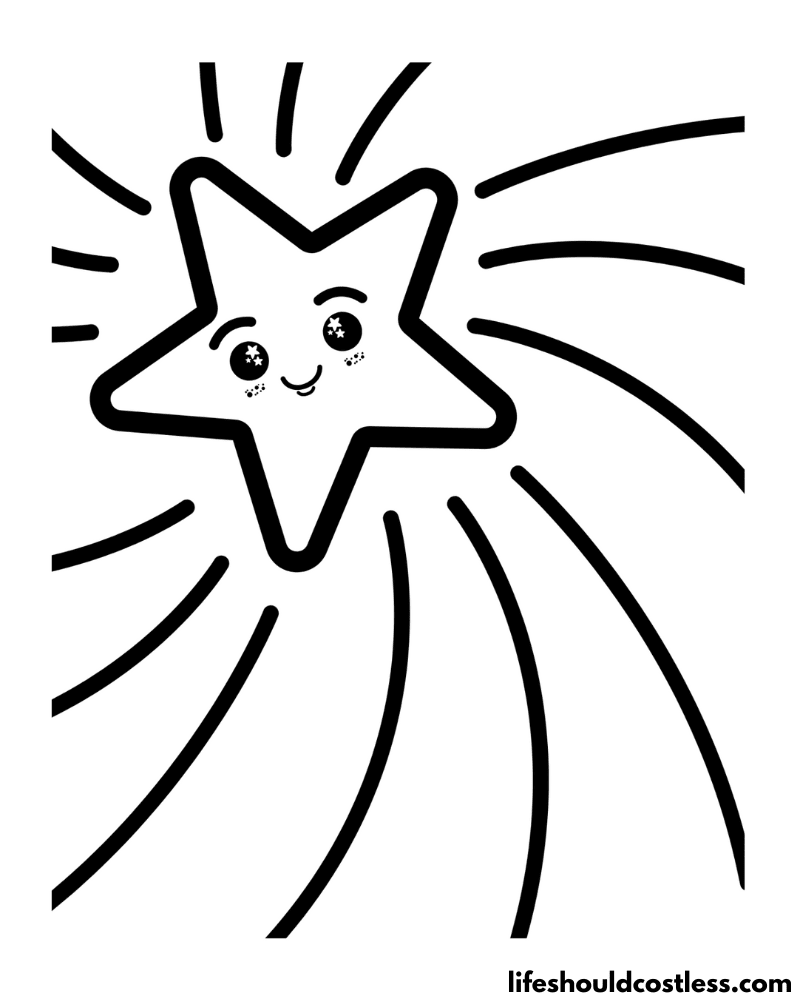
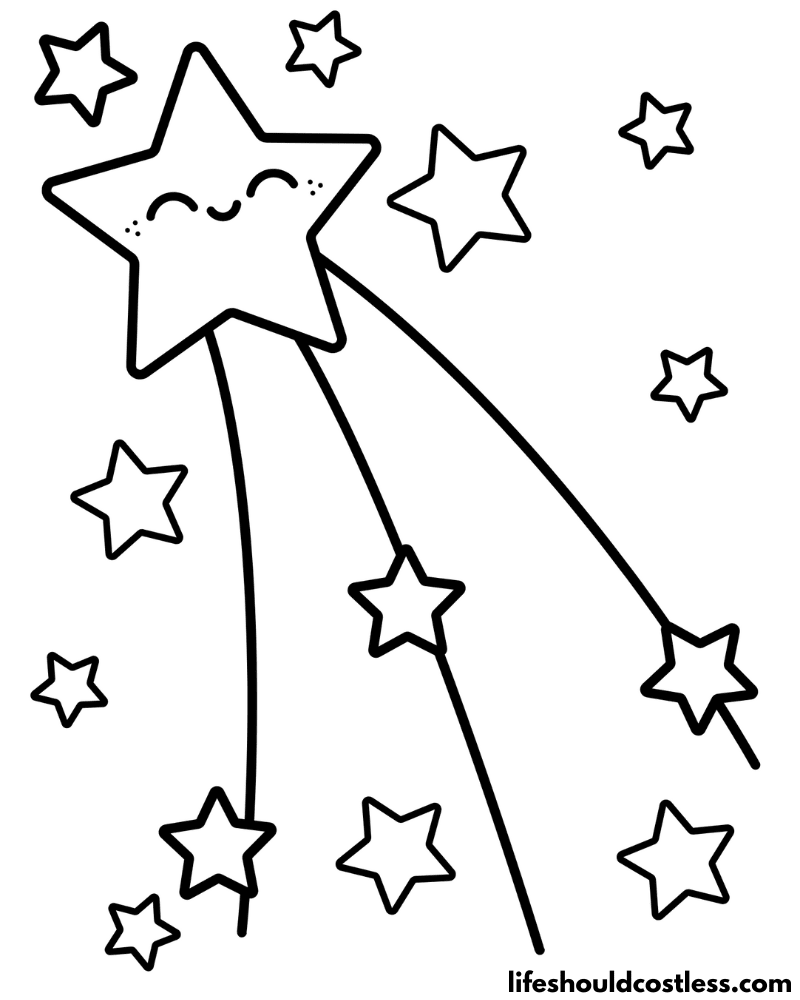
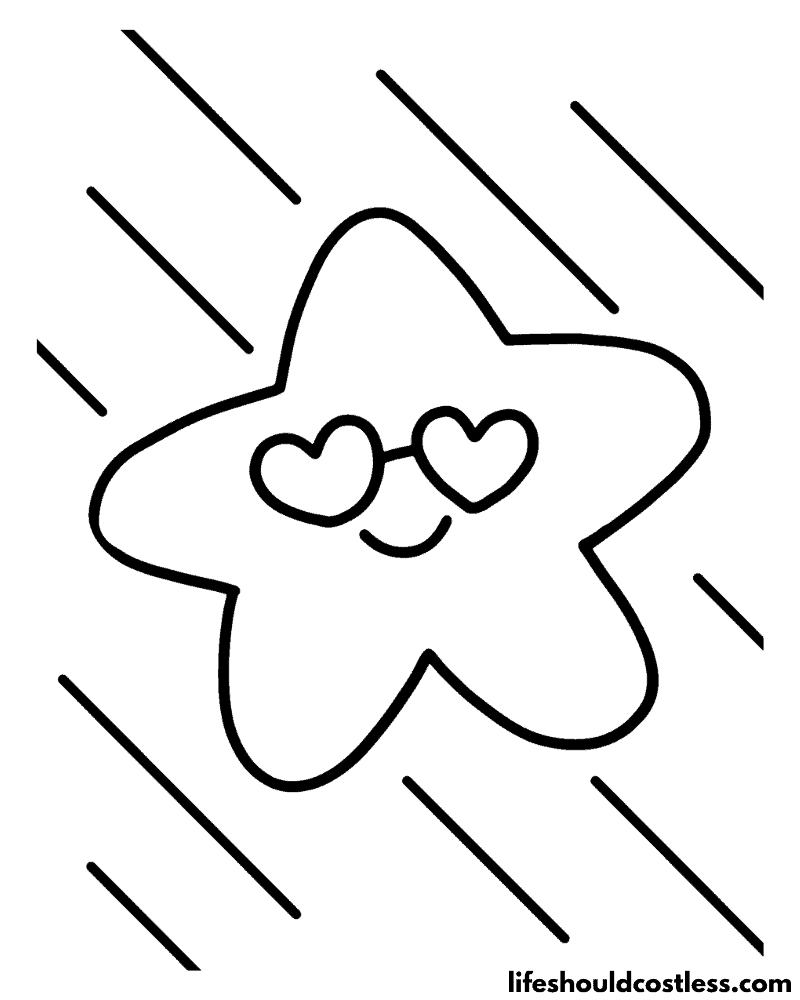
Misc Other Stars
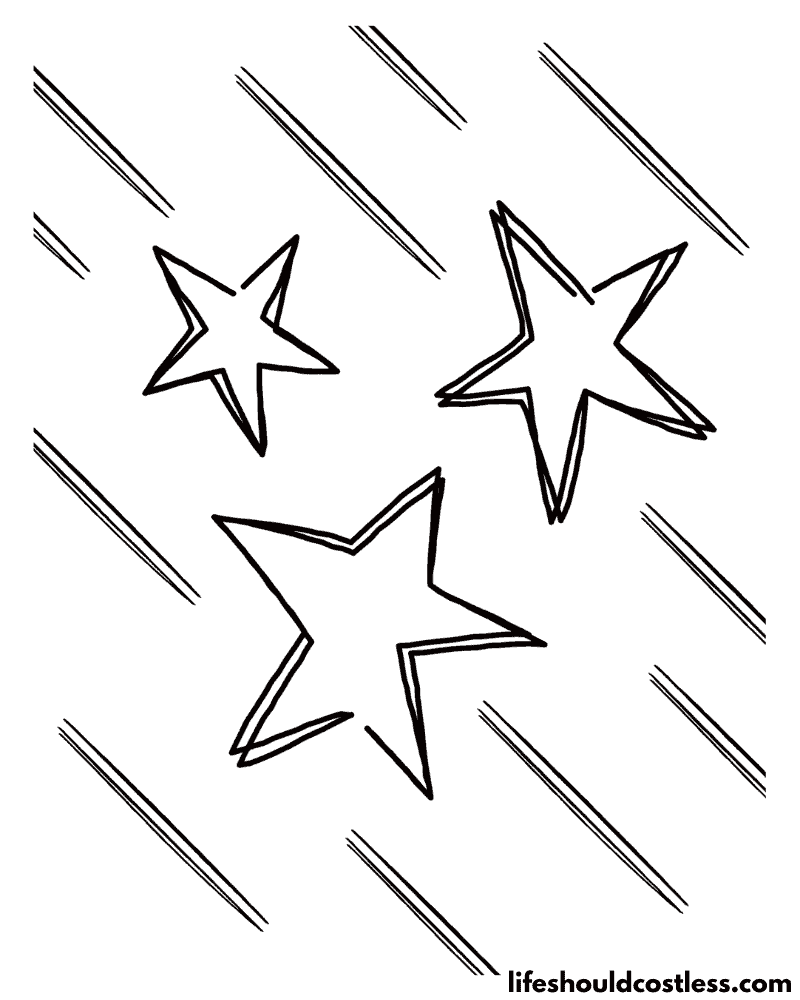
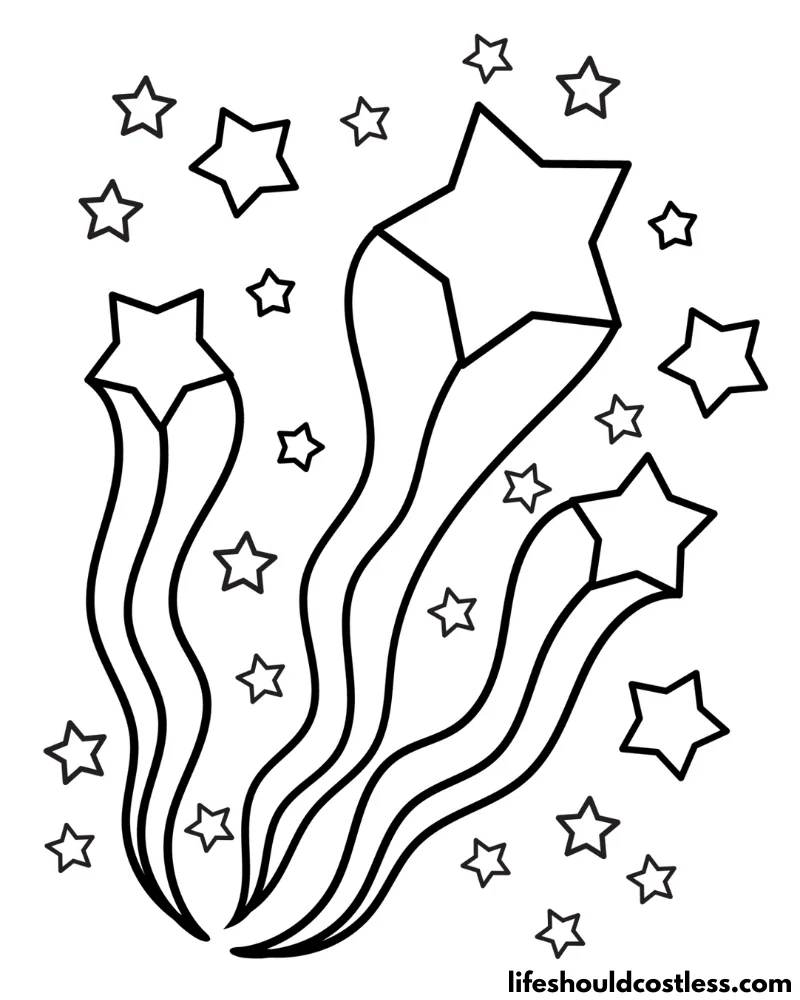
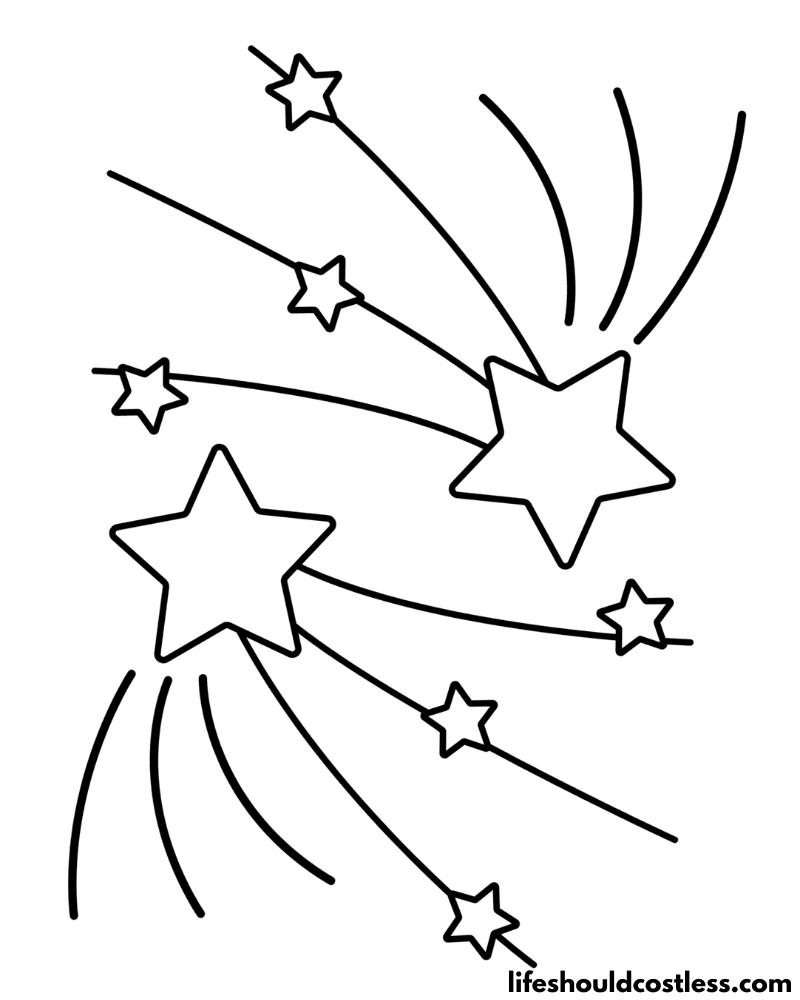
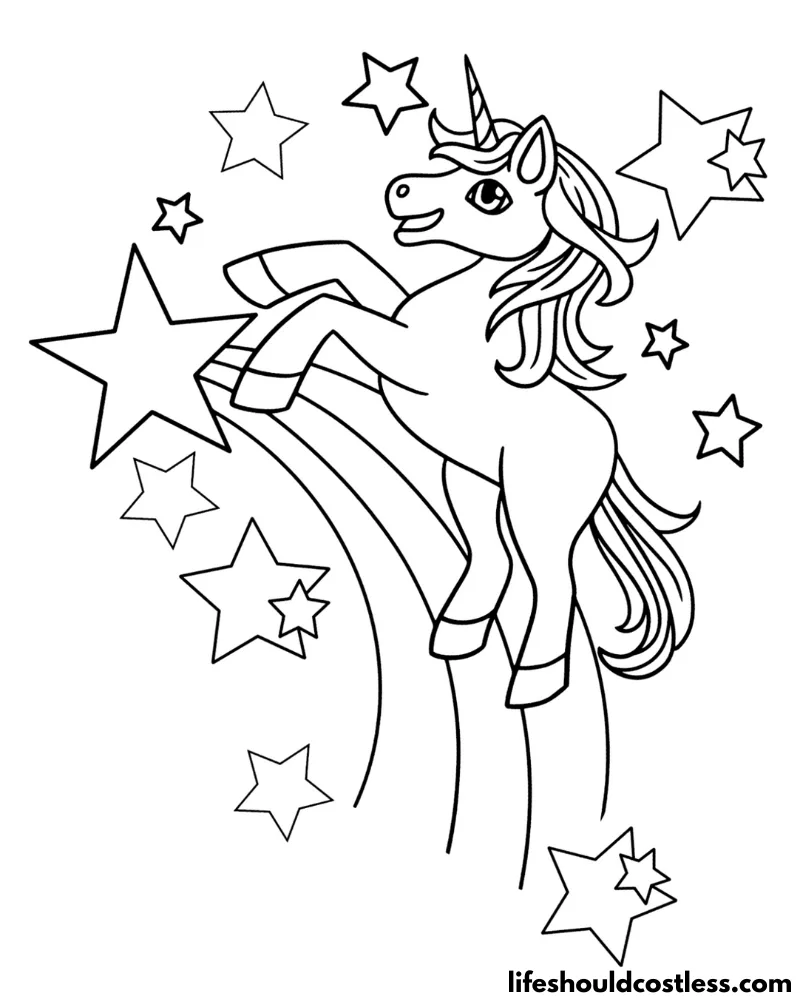
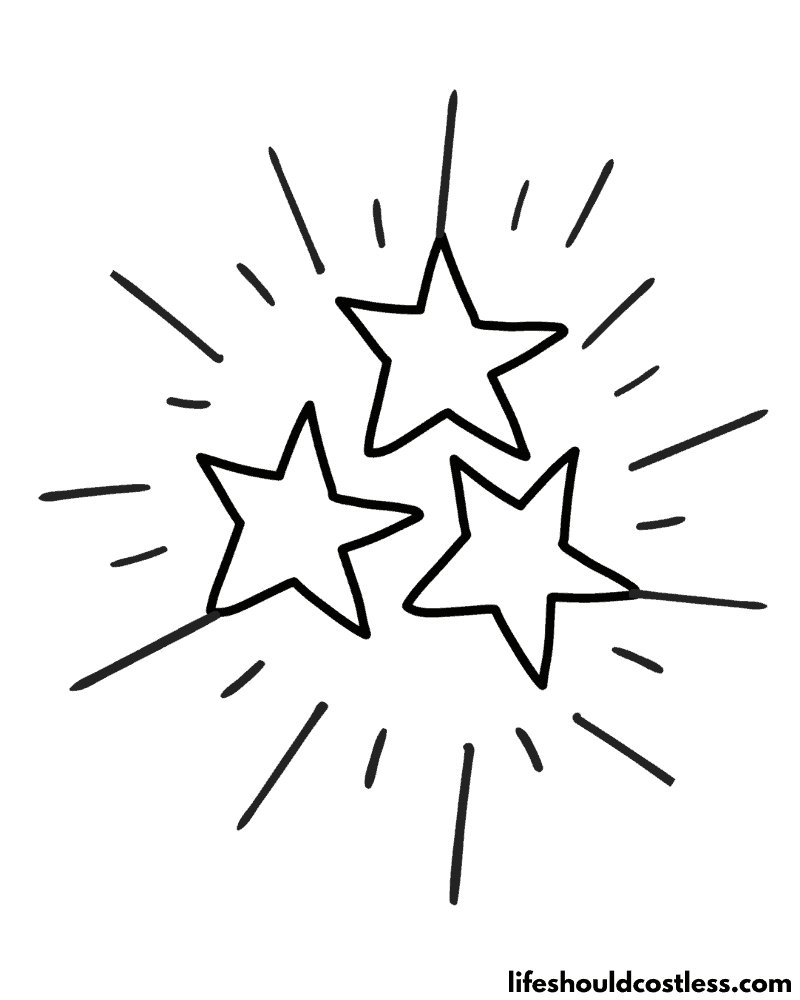
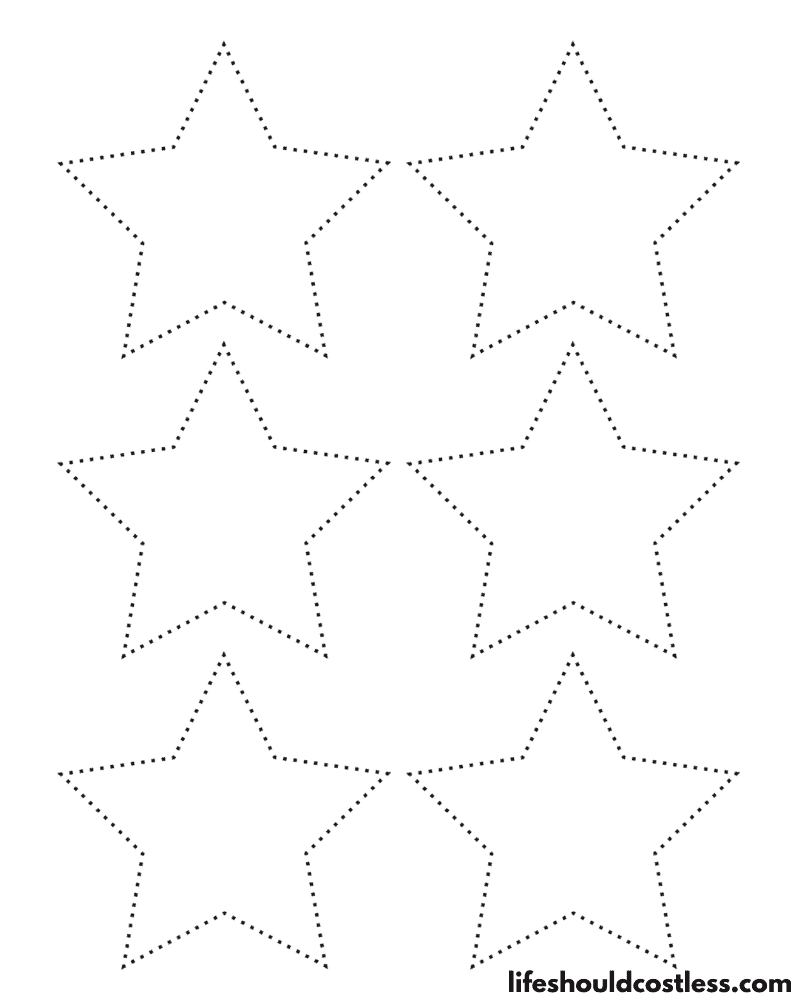
FAQ’s
The real colors of Stars can vary depending on their temperature. Here are the general color categories based on stellar temperature:
Blue Stars: These are the hottest Stars, with temperatures above 10,000 Kelvin. They emit a blue-white light and appear bluish in color. Examples of blue Stars include Rigel in the constellation Orion and Sirius, the brightest Star in the night sky.
White Stars: Stars with temperatures ranging from 7,500 to 10,000 Kelvin are classified as white Stars. They emit a pure white light and appear white or slightly blue-white in color. Examples include Vega in the constellation Lyra and Deneb in the constellation Cygnus.
Yellow Stars: Stars with temperatures between 5,000 and 7,500 Kelvin fall into the yellow Star category. They emit a yellowish-white light and appear yellow or yellow-white in color. The Sun, being a yellow dwarf Star, is a prime example.
Orange Stars: Stars with temperatures between 3,500 and 5,000 Kelvin are classified as orange Stars. They emit a warm orange light and appear orange or reddish-orange in color. Examples include Arcturus in the constellation Bootes and Aldebaran in the constellation Taurus.
Red Stars: These are the coolest Stars, with temperatures below 3,500 Kelvin. They emit a deep red light and appear reddish or even deep crimson in color. Examples of red Stars include Betelgeuse in the constellation Orion and Antares in the constellation Scorpius.
It’s important to note that factors such as the Star’s age, composition, and atmospheric conditions can also influence its observed color.
Additionally, when viewing Stars with the naked eye, their colors may appear less saturated or vibrant compared to how they are represented in astronomical images captured by telescopes.
*I will add more Star colour / color questions and answers as the questions get sent to me.
In conclusion, Star coloring pages provide a delightful and imaginative way to explore the wonders of the universe through art.
These pages allow individuals of all ages to embark on a celestial journey, bringing vibrant life to fun and unique Star designs.
Coloring Stars can truly encourage creativity and artistic expression.
As we splash colors onto the pages, we connect with the awe-inspiring beauty of the cosmos and find a sense of tranquility and relaxation.
Whether it’s admiring the vibrant hues of a blue Star, or creating a dazzling Starry sky, the act of coloring brings us closer to the wonders of the night sky.
So pick up your coloring tools, unleash your creativity, and let the Stars ignite your imagination with the enchanting world of coloring pages of Stars.
Thanks so much for stopping by my blog and supporting my endeavors to make people’s lives a little easier/better/more affordable.
If you liked this post, or found it helpful in any way, please make sure to share it with your family, friends, and co-workers via social media.
Or you could even send them the direct link via email. Whichever way you choose to spread the love, I super appreciate it! ~Sarah

How To Follow & Support This Site
- If you would like to subscribe to my email list, go here.
- Make sure to follow along via social media, by going here.
- If you would like to learn how to really show your support to this site (at no cost to you), go here.
- If you would like to make a direct donation to the site, go here.
Check out my other free printables
- To see all of my free printables, go here.
- To see an Alphabetized Index of all my coloring pages, go here.
- To see all of my nature and weather coloring pages, go here.
Otherwise, here are direct links to several of my other related posts that you’re also going to love:
Nature & Weather
Fall Coloring Pages
Halloween
Thanksgiving
Winter Coloring Pages
Christmas
New Years
St. Patrick’s Day
Valentine’s Day
Spring coloring pages
Easter
Summer coloring pages
Other good resources for a printable star
- https://clipart-library.com/star-coloring-pages-for-preschoolers.html
- https://twokidsandacoupon.com/2023/02/wish-upon-a-star-with-these-free-printable-star-coloring-pages.html
- http://coloringway.com/nature/star-coloring-pages.htm
*This post was originally shared to this blog on 06/08/2023, and has since been updated to improve user experience, add video instruction, as well as to make it as shareable as possible across the social medias.
**Please note that I do try my hardest to provide factual, but easy to understand, information about each topic. If you notice a discrepancy in my coloring pages, facts, or see something that you deem “misinformation/incorrect” please make sure to notify me about it. I would prefer that you send me an email with a link to a more reputable resource on that subject, so that I can correct it as soon as possible. Thanks so much for helping this site become the best that it can be!
***Resources from djinkers were used in the production of this article.
